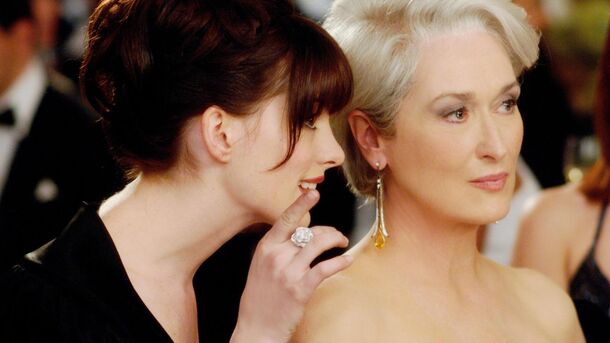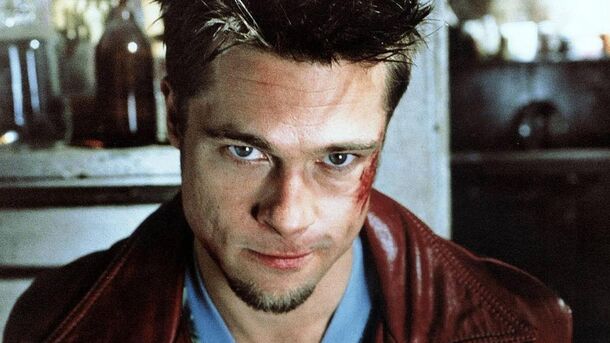10 Times the Movie Was Actually Better than the Book (Yes, We Went There)

Sometimes, Hollywood pulls a rabbit out of its hat and churns out a film that's even better than its paperback origin.
1. "Stardust" (2007)
.jpg)
Don't get us wrong. Neil Gaiman 's novel is whimsical, imaginative, and a thoroughly good read, but the movie brings it to life in a way the written word just can't. The film adaptation retains the heart of the novel but imbues it with humor, additional excitement, and a dash of romance. We've got an all-star cast – Charlie Cox, Michelle Pfeiffer, Robert De Niro as a cross-dressing sky pirate (I mean, come on!). The adventure in Stormhold comes to life, turning from a simply lovely fairy tale into a delightful film you want to watch over and over.
2. "The Devil Wears Prada " (2006)

Yes, the book by Lauren Weisberger was a bestseller, but Meryl Streep as Miranda Priestly? Irreplaceable. The film gives depth and nuance to Priestly, making her more than just a villainous boss. Streep's performance brought a level of empathy to the character that was lacking in the book. Plus, the transformation of Anne Hathaway 's Andy Sachs, both in fashion and character, is far more satisfying on screen. Not to mention, the film gave us iconic lines like, "Florals? For spring? Groundbreaking."
3. "Jaws" (1975)
.jpg)
The suspense! The horror! The unforgettable music score! Spielberg's "Jaws" is an iconic example of cinema triumphing over literature. Peter Benchley's novel is a solid thriller, but it gets bogged down with subplots, including a mafia debt and an affair. The movie, however, excises these to focus on the man-eating great white shark. By honing in on the fear and suspense of the shark attacks, Spielberg created an enduring classic that made an entire generation wary of the ocean.
4. "Jurassic Park" (1993)
.jpg)
While we're on the topic of Spielberg, let's not forget "Jurassic Park." The original novel by Michael Crichton is a fascinating read, packed with scientific explanations and thrilling dinosaur encounters. But the magic of seeing dinosaurs come to life on screen? Unbeatable. The film also cleverly shifted the focus onto Dr. Alan Grant and the kids, adding a human element that tugged at our heartstrings just as much as the T-Rex tugged at that poor goat.
5. "Die Hard" (1988)
.jpg)
Bet you didn't know "Die Hard" was based on a book, did you? The film was adapted from Roderick Thorp's novel "Nothing Lasts Forever." Now, the book is an engaging read, but it has a darker, more pessimistic tone than its movie counterpart. Bruce Willis as John McClane gave us a more charismatic hero – one who manages to smile even in the face of imminent death. The film's brilliant blend of action, humor, and Christmas spirit makes it a far more enjoyable experience than the novel.
6. "The Princess Bride" (1987)
.jpg)
William Goldman's novel is witty, charming, and exceptionally clever. But Rob Reiner's movie adaptation brings the tale to life in a way that words on a page simply can't. The film captures the book's humor and warmth while simplifying its complex narrative structure. Cary Elwes' Westley and Robin Wright's Princess Buttercup are iconic, their chemistry electric, and who can forget Mandy Patinkin's Inigo Montoya, forever seeking revenge for his father's death? The addition of the grandfather and grandson narration adds a sweetness that isn't present in the book, making this one fairy tale that's even more magical on screen.
7. "Blade Runner " (1982)

"Blade Runner" is based on Philip K. Dick's novel, "Do Androids Dream of Electric Sheep?" The book is classic Dick, filled with dystopian futures, synthetic lifeforms, and deep existential questions. The movie, though, takes these elements and brings them to life in a vivid, neo-noir landscape. The novel's narrative can get overly philosophical and complex, but Ridley Scott 's film distills the essence of it, focusing on the tension between Rick Deckard (Harrison Ford ) and the replicants. Its visual storytelling, coupled with Ford's performance, elevates the film above its source material.
8. "Fight Club" (1999)

Chuck Palahniuk's novel is a wild ride, but David Fincher's film adaptation is a visceral, sensory overload that perfectly captures the spirit of the book. Fincher skillfully navigates the book's plot twists, using visual cues to hint at the shocking revelation about Tyler Durden (Brad Pitt) and the narrator (Edward Norton). The film enhances the themes of consumer culture critique and male aggression, not to mention it gave us one of the most famous lines in movie history: "The first rule of Fight Club is: you do not talk about Fight Club."
9. "The Shawshank Redemption" (1994)
.jpg)
Stephen King 's novella "Rita Hayworth and Shawshank Redemption" is a powerful read, but it's in Frank Darabont's film that the story truly shines. The movie expands upon the novella, fleshing out the characters and their experiences in Shawshank State Penitentiary. The bromance between Andy Dufresne (Tim Robbins) and Red (Morgan Freeman) is more profound and impactful in the film, and the narrative adjustments, such as the inclusion of the character Tommy, add to the depth of the story. Plus, the movie's ending, with Red heading to Zihuatanejo, is far more satisfying than the book's ambiguous conclusion.
10. "A Clockwork Orange" (1971)
.jpg)
Stanley Kubrick's film adaptation of Anthony Burgess' dystopian novel is a masterpiece in cinematic storytelling. While the novel is inventive with its made-up slang, the film takes this a step further by translating it into a visual language that is equal parts horrifying and compelling. Malcolm McDowell's portrayal of the sociopathic Alex DeLarge is chilling, bringing a charm and menace to the character that is missing in the book. And let's not forget the haunting, eerie use of Beethoven's music, which adds another level of macabre beauty to the film.